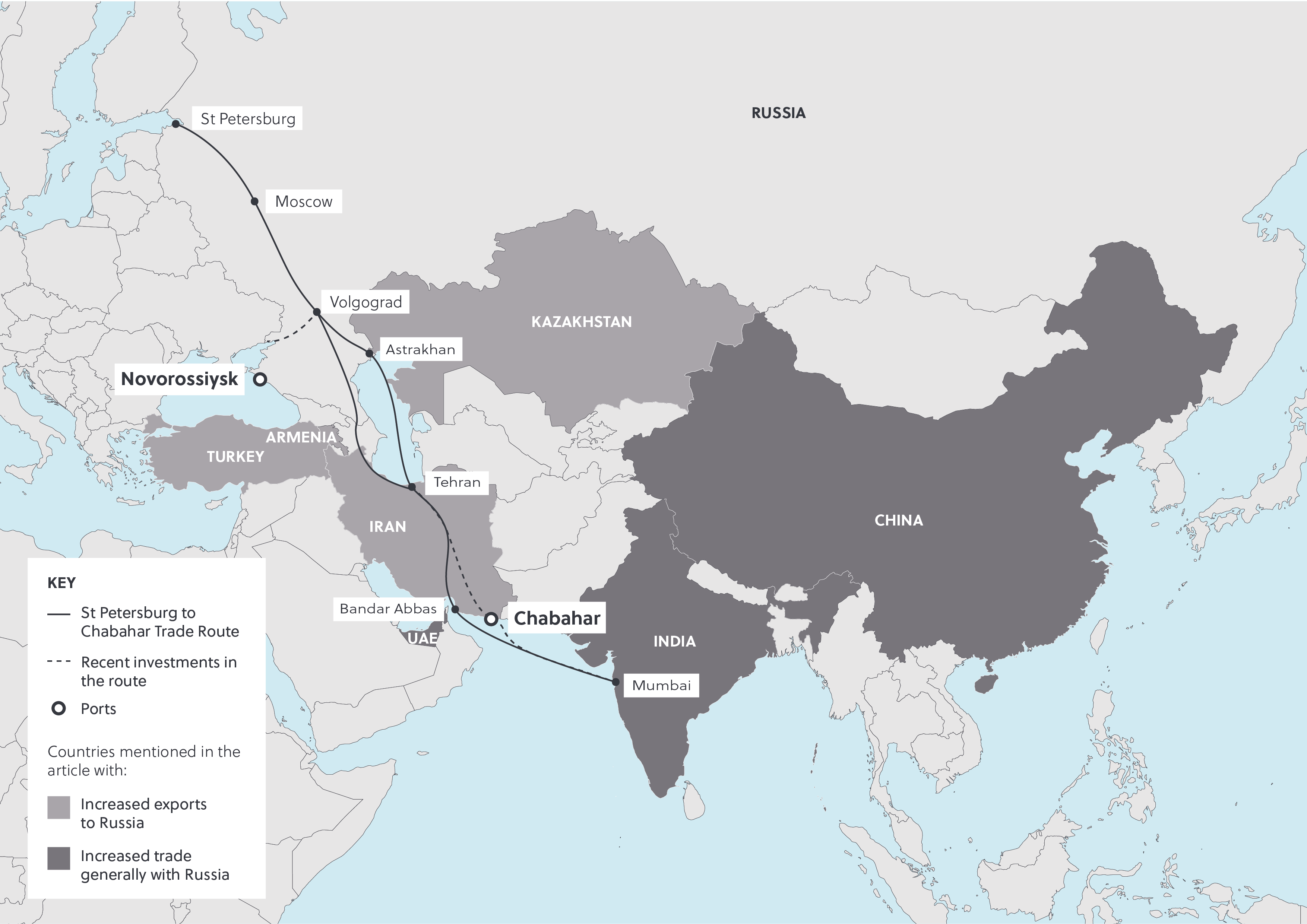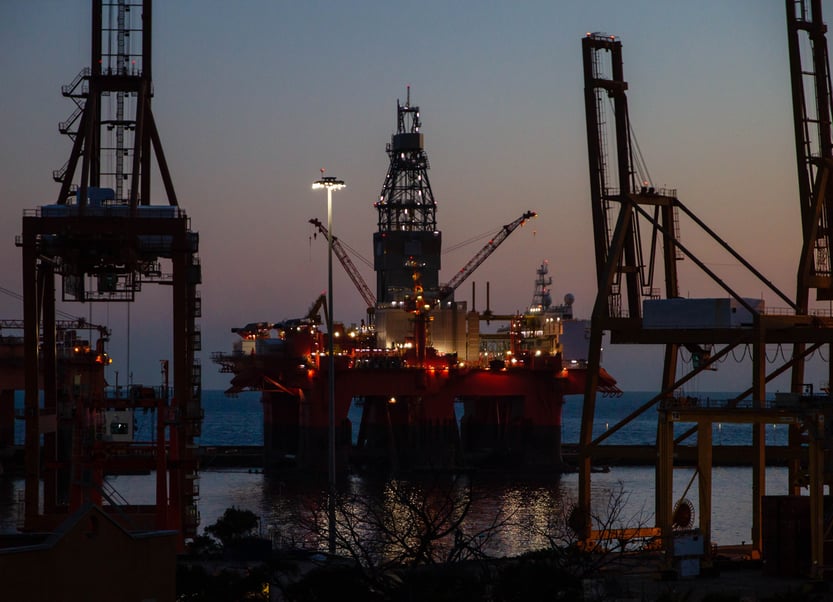Originally published in the July-August 2023 edition of WorldECR’s journal of Export Controls and Sanctions (and printed here with kind permission), in this article Tom Boughton reflects on Russia’s use of regional partners in its counter-sanctions strategy.
In the wake of the February 2022 invasion, Russia quickly overtook Iran as the world’s most sanctioned jurisdiction. However, while many commentators predicted the breakdown of the Russian economy in the following months, with logistics routes, supply chains, and access to international customers and finance supposedly severed beyond repair, this collapse has not materialised. As the pace of change in sanctions regimes has begun to slow down, at least in relative terms, increasing attention is being paid to the effectiveness of the sanctions that have been imposed and Russia’s ability to both evade and adapt to these. Russia’s use of regional partners has been a key part of its counter-sanctions strategy; co-operating with other states experienced at living with sanctions, such as Iran, and leaning on its trade relationships with closer neighbours, who are facing the challenge of balancing their relationships with Russia and the collective West. While this has helped Russia to plug the emerging gaps in their supply chains and export routes so far, the last few months have seen the US, EU and other allies put increasing pressure on jurisdictions they perceive to be assisting Russia to resist the sanctions against it.

Growing relationship with Iran – a friendship of convenience?
Russia’s growing isolation since the invasion of Ukraine has seen it seek out the assistance of other states that have had to adapt to life under international sanctions. This has perhaps been most clearly demonstrated by Russia’s increasing ties to Iran, which has notoriously supplied its Shahed armed drones to the Russian military, with advanced Russian hardware – such as the Su-35 fighter jet – rumoured to be on its way in the other direction in the future. But this assistance has extended beyond hardware, too. Russian and Iranian officials have held high-level meetings to discuss growing economic cooperation and, crucially, compare best practice on how best to evade far-reaching sanctions as fellow oil and gas exporters. These growing ties were highlighted by President Putin’s visit to Tehran in July 2022, a rare international trip since the COVID-19 pandemic.
Since the imposition of wide-reaching sanctions on Russian oil, and the marine and financial infrastructure supporting it, Russia has followed Iran’s lead and has started to make increasing use of a so-called ‘ghost fleet’ of tankers to ship its oil exports. This fleet is made up of often aging vessels with opaque ownership, providing an alternative to the Western owned, maintained and insured vessels which fall firmly within the crosshairs of the various sanctions and restrictions imposed against Iranian, Venezuelan and Russian oil. Estimates as to the fleet’s likely size vary significantly, however Russia is understood to have significantly added to its ranks over the course of the last year, financing the purchase of a range of vessels through proxies, with a view of further securing its ability to export its oil to key markets such as China and India, which remain willing to take on Russian volumes. The Financial Times has reported that a number of Iranian-controlled ships within this fleet, previously focused on facilitating Tehran’s oil exports, have begun instead to facilitate Russian exporting. New commodities traders and shipping companies have sprung up seemingly overnight, often based in the sanctions-agnostic United Arab Emirates, filling in the gaps left by the large international trading houses and only too eager to gain a slice of the substantial profits offered by Russian oil trading since the war. In some cases, vessels handling Russian oil have also been found to have manipulated their tracking systems to conceal their true locations – a practice known as ‘spoofing’ – with the goal of obfuscating their origin and destination, often with a view to evading the various embargoes and restrictions. There are also accounts of Iran sharing its extensive know-how in not just facilitating the continued export of oil and gas products, but crucially in how to best marshal the shadow financial system to ensure that they are able to receive payment for these exports.
Russia and Iran have also been exploring more long-term means of economic cooperation outside of the Western sphere of influence. Most notably, the two countries are reportedly investing billions of dollars in the infrastructure to develop a network of trade routes over land and sea, stretching from St Petersburg in the north, over the Caspian Sea, to the port of Chabahar in southern Iran. The route sits outside of the direct reach of Western sanctions and controls, allowing for growing end-to-end bilateral trade, but also opens the prospect of providing Russia with a more direct route to some of its key export markets since the invasion, in India, Pakistan and China. While unlikely a short term solution to the challenges faced by Russia in the face of sanctions, the project could be seen as part of a more far-looking strategy to develop Russia and Iran’s ability to trade with each other and their partners outside of the traditional Western foreign policy coalition.
Parallel trading partners
Other partners have been more cautious, treading the line between maintaining, and often expanding, their trade interests with Russia, while ensuring that they do not become the target of Western sanctions themselves. Former Soviet states such as Armenia and Kazakhstan have quickly become hubs for so-called ‘parallel importing’, whereby Western goods no longer being sent to Russia are instead imported into the country via third countries, either with or without the knowledge of their original suppliers. Since the invasion of Ukraine there have been growing concerns that these exports have dampened the impact of Western sanctions and, in some cases, may have allowed Russia to continue to source sensitive technology and equipment, despite their embargo.
Underlining this, trade data suggests a 400 percent increase in Armenian exports to Russia between 2022 and 2023. Meanwhile, over the course of 2022, the export of electronics and household goods alone from Kazakhstan to Russia increased almost twentyfold. Both countries have deep economic and political ties to Russia and are critically both members of the de facto Russia-led Eurasian Economic Union, which lowers customs barriers and tariffs between member states. Apart from their own dependencies on Russia for various imports, Armenia also leans on Russia as its security guarantor in its ongoing conflict with Azerbaijan over the disputed Nagorno-Karabakh region, while Kazakhstan notably continues to rely on Russia to facilitate a large portion of its oil exports, which primarily flow through the Caspian Pipeline Consortium to the Black Sea port of Novorossiysk. This dynamic is not just limited to former Soviet states. Despite its NATO membership, Turkey has also become a major parallel export hub for goods to Russia, providing deficit goods ranging from plastics to automobile parts, including US-made equipment, as President Erdogan seeks to continue to balance Turkey’s interests with Western powers and Russia. Likewise, the UAE continues to pitch itself as a friendly destination for Russian relocation, investment and trade – the country has increasingly become a key hub for Russian gold since the introduction of Western sanctions, while Russian buyers dominate its elite real estate market.
The growing volume of parallel imports through third countries means that the original exporters are increasingly losing control over the end destination of their goods, which in some cases might include dual use technologies banned for export to Russia. The continuing shipment of semiconductors and other advanced technologies, despite the extensive sanctions covering these goods, has been raised as a particular concern. In the case of Kazakhstan, its exports to Russia of advanced semiconductors, subject to Western sanctions, were reportedly worth USD 3.7 million in 2022, up from USD 12,000 prior to the invasion. Meanwhile, deliveries of these goods to third countries from the US and EU have also substantially increased.
Tightening enforcement and closing loopholes
For the third country exporters it has become clear that balancing relationships with Russia and the West is increasingly challenging. If 2022 was the year of introducing new sanctions at a breathless pace, 2023 so far appears to be the year for closing the loopholes and addressing enforcement. Applying pressure to Russia’s trading partners has been highlighted as a key part of this strategy, with parallel import routes undermining the impact of Western sanctions so far. A March 2023 compliance note from the US authorities focused precisely on this theme, specifically flagging Armenia, Turkey, Uzbekistan and China as “transshipment points commonly used to illegally redirect restricted items to Russia or Belarus”. Following a wave of lobbying by US and EU officials, some jurisdictions have begun to take action.
Following reported behind the scenes pressure from US and EU officials, Turkish customs officials have begun cracking down on the transit of sanctioned goods headed for Russia through Turkish territory, a substantial change in stance. Kazakhstan has also recently announced the introduction of enhanced measures to monitor imports and exports, in particular goods destined for re-export out of the country. A key driver in negotiations has been the threat of secondary sanctions. The US has a history of employing these as a deterrent against sanctions busters and recently designated entities in Turkey and UAE for their role in the supply of sanctioned technology and equipment to Russia.
It remains to be seen how effective this compliance push will be and how Russia’s trading partners will seek to balance their relationships with Russia and the West going forward. Significant challenges will certainly remain, whether in terms of adequately resourcing the state institutions tasked with policing violations, or even geographical challenges, such as Kazakhstan’s vast and largely unmonitored border with Russia. What is clear is that manufacturers and exporters need to understand the full breadth of their supply chains and client relationships, whether there be a direct link to Russia or not.




